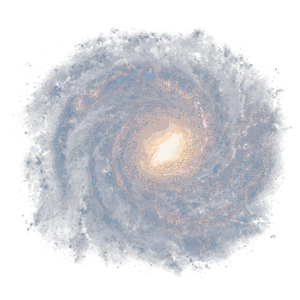The Downlink • May 31, 2024
Old becomes new
Space Snapshot

Get ready to see something new in the night sky. A nova — a giant stellar explosion — is expected in the star system T Corona Borealis sometime between now and the end of the year, likely creating what will look like a new star about as bright as the north star. Learn more about why this nova will happen and how you can see it. Pictured: The double-star system Z Camelopardalis (the white dot at the center) went nova in the past, ejecting and sweeping up material around it into the wispy shapes visible nearby. This view of the system was captured in the ultraviolet by NASA's Galaxy Evolution Explorer. Image credit: NASA / JPL-Caltech.
Fact Worth Sharing

A nova is a much smaller stellar explosion than a supernova. Novae are also much less rare; the last nova to happen in the Milky Way was in 2022 — we haven’t seen a supernova in our galaxy since 1604.
Mission Briefings


Old data are yielding new discoveries about Venus’ volcanism. Analysis of radar data from NASA’s Magellan orbiter has found evidence of the formation of new rock on the Venusian surface, likely from lava flows from two volcanoes, suggesting that these volcanoes erupted while the spacecraft orbited the planet in the 1990s. This adds to the evidence that Venus is more volcanically active today than previously believed. Pictured: A view of Venus’ surface based on radar data shows the volcano Sif Mons, which is exhibiting signs of ongoing activity. Image credit: NASA/JPL.

ESA’s Solar Orbiter has traced solar wind to its source. The spacecraft recently connected measurements of the solar wind around it to source regions seen in high-resolution images of the Sun’s surface at a close distance. This allows scientists to better understand the origins of solar wind on the Sun, improving the ability to predict phenomena like solar storms.

Meet the nearest temperate Earth-sized planet ever discovered. Gliese 12 b is a planet similar in size to Earth, located just 40 light-years away. It was discovered using the TESS space telescope and confirmed with follow-up observations from other space and ground-based observatories. Gliese 12 b is a great candidate for follow-up observations by JWST, which could help determine whether Earth-like planets orbiting cool stars can retain their atmospheres.

The National Space Society mourns the passing of Anita Gale. The National Space Society’s CEO and longtime board member Anita Gale transformed the organization over the course of her 33 years of involvement, including the opening of a new headquarters office at the Kennedy Space Center and garnering a $1 million grant from Blue Origin’s Club for the Future.
From The Planetary Society


The coolest space pics of the last month are here! Among them is this vertigo-inducing view of the International Space Station, captured by HEO Robotics’ imaging satellite from a distance of just 69 kilometers (43 miles). Among May’s best space images, you’ll also find beautiful aurorae, a cosmic butterfly, a Europan platypus, and more. Image credit: HEO Robotics.

What does it mean when we say “competed missions?” When The Planetary Society advocates for a balanced portfolio of planetary exploration missions at NASA, we frequently mention the importance of “competed missions” as part of that balance. Learn what that term means, how they’re different from other types of missions, and why they matter.

Together, to Mars. Every year, Explore Mars hosts the Humans to Mars Summit, a global gathering of people working to advance human exploration of the Red Planet and beyond. This week on Planetary Radio, hear from representatives from around the world about the work being done to build a permanent and sustainable human presence on Mars.
New in the member community

Next month in the book club. The Planetary Society’s monthly members-only virtual book club will read “The New World on Mars: What We Can Create on the Red Planet” by Robert Zubrin. Members can RSVP for the June 6 book club meeting to hear from Zubrin and ask questions. Not yet a member? Join today.
What's Up

This week, six planets are lined up in the predawn east, but only two will be easy to see: reddish Mars in the east and yellowish Saturn above Mars. Very bright Jupiter is very low to the eastern horizon, as is nearby bright Mercury. They are extremely close together on June 4. A telescope will probably be needed to see Uranus and definitely to see Neptune. The crescent Moon will be near Mars on June 2. Find out what June's night skies have in store.
Wow of the Week

The Sun is doing its best impression of a shag carpet in this image from the European Space Astronomy Center in Spain. You can see the Sun’s chromosphere (the layer above the visible surface of the Sun), including dark, blotchy sunspots and lighter patches known as plages. The image shows about a third of the diameter of the solar disc. Image credit: ESA / ESAC / CESAR – A. de Burgos.
Send us your artwork!
We love to feature space artwork in the Downlink. If you create any kind of space-related art, we invite you to send it to us by replying to any Downlink email or writing to [email protected]. Please let us know in your email if you’re a Planetary Society member!


 Explore Worlds
Explore Worlds Find Life
Find Life Defend Earth
Defend Earth

